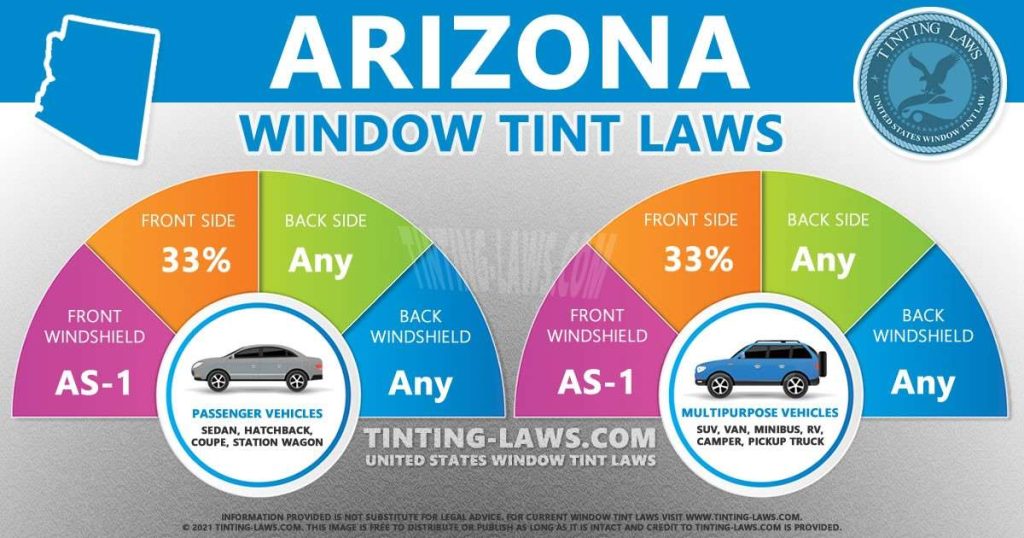What Is The Legal Tint In Arizona

Understanding Arizona's legal tint regulations is crucial for any car owner, especially those involved in vehicle modification or DIY maintenance. Non-compliance can lead to fines and the hassle of having to remove the tint. This article provides a comprehensive breakdown of the legal tint specifications in Arizona, ensuring you stay within the bounds of the law while enhancing your vehicle's appearance and comfort.
Why This Matters: Staying Legal and Safe
Many people tint their car windows for reasons like aesthetics, privacy, and reduced heat inside the vehicle. However, Arizona has specific regulations in place to ensure driver visibility isn't compromised. Understanding these regulations helps you:
- Avoid Fines: Law enforcement officers can issue citations for illegal tint levels.
- Pass Vehicle Inspections: Illegal tint can cause your vehicle to fail inspection.
- Maintain Safe Driving Conditions: Excessive tint can reduce visibility, particularly at night.
Key Specs and Main Parts of Arizona Tint Law
Arizona's tint laws are primarily governed by Arizona Revised Statutes (ARS) § 28-959.01, which details specific requirements for window tinting on motor vehicles. The key specifications revolve around two primary metrics:
- Visible Light Transmittance (VLT): This percentage indicates how much visible light can pass through the tinted window. A lower VLT percentage means a darker tint.
- Reflectance: This refers to the percentage of light reflected by the tint film. Arizona law also regulates reflectance to avoid excessive glare that could affect other drivers.
Here's a breakdown of the allowable VLT and reflectance percentages for different windows:
Front Side Windows:
VLT: Must allow more than 33% of light in.
Reflectance: Must not be more than 35%.
Rear Side Windows and Rear Window:
VLT: Any VLT percentage is allowed. However, if the rear window is tinted, the vehicle must have rearview mirrors on both sides.
Reflectance: Must not be more than 35%.
Windshield:
A non-reflective tint is permitted along the top edge of the windshield above the manufacturer's AS-1 line, or no more than five inches from the top of the windshield, whichever is less.
Important Note: These specifications are subject to change. Always consult the latest version of the ARS or check with the Arizona Department of Transportation (ADOT) for the most up-to-date information.
Understanding the Numbers: VLT and Reflectance
Visible Light Transmittance (VLT) is the key number to focus on. It dictates how dark your tint can be. For example, a 50% VLT tint means 50% of the light passes through the window, making it lighter than a 35% VLT tint, which allows only 35% of light to pass through.
Reflectance is less commonly discussed but equally important. Highly reflective tints can create glare, impacting other drivers' visibility. Arizona law restricts reflectance levels to prevent this.
How It Works: Tint Meters and Measurement
Law enforcement officers use specialized devices called tint meters to measure the VLT of window tint. These meters shine a light through the window and measure the amount of light that passes through. The meter then calculates the VLT percentage.
The measurement process is relatively straightforward. The officer will typically clean the window surface and then place the tint meter against the glass. The meter provides an immediate reading, indicating whether the tint complies with Arizona law.
Real-World Use: Basic Troubleshooting and Considerations
Before applying any tint, consider these points:
- Know Your Starting Point: Untinted glass already has some degree of tint, typically around 70-90% VLT. This means adding a 35% VLT tint film to a window that already allows 80% VLT will result in a final VLT significantly lower than 35%.
- Choose Reputable Products: Opt for high-quality tint films from reputable manufacturers. These films are more likely to provide accurate VLT ratings and resist fading over time.
- Professional Installation: While DIY tinting is possible, professional installation ensures proper application and reduces the risk of bubbles, creases, or other imperfections.
- Medical Exemptions: Individuals with specific medical conditions that necessitate darker tint may be eligible for a medical exemption. Consult with your physician and the Arizona Motor Vehicle Division (MVD) for details on how to obtain an exemption.
Troubleshooting Tips:
- Bubbles or Peeling: This indicates poor installation or low-quality film. Re-tinting may be necessary.
- Fading: Over time, tint can fade due to UV exposure. This can result in non-compliance with VLT regulations. Replacement is the best solution.
- Hazy Appearance: This can be caused by improper cleaning or damage to the tint film. Use a mild soap and water solution for cleaning. Avoid abrasive cleaners.
Safety: Considerations and Potential Issues
While tinting can enhance your vehicle's comfort and appearance, it's crucial to prioritize safety:
- Visibility at Night: Excessive tint can significantly reduce visibility at night or in low-light conditions. This can increase the risk of accidents.
- Emergency Situations: In emergency situations, such as a car accident, responders may need to see inside the vehicle quickly. Dark tint can hinder their ability to assess the situation and provide assistance.
- Heat Absorption: Darker tints absorb more heat, which can put a strain on your vehicle's air conditioning system, especially during Arizona's hot summers.
Risk Mitigation:
- Always adhere to the legal VLT limits.
- Ensure your rearview mirrors are properly adjusted.
- Consider the climate and your driving habits when choosing tint darkness.
Where to Find Additional Information
This article provides a general overview of Arizona's legal tint regulations. For the most accurate and up-to-date information, consult these resources:
- Arizona Revised Statutes (ARS) § 28-959.01
- Arizona Department of Transportation (ADOT)
- Your Local MVD Office
We hope this detailed guide has been helpful in understanding Arizona's legal tint requirements. Remember to prioritize safety and compliance when tinting your vehicle's windows.
We have a detailed diagram summarizing this information available for download. Please contact us to receive the file.
